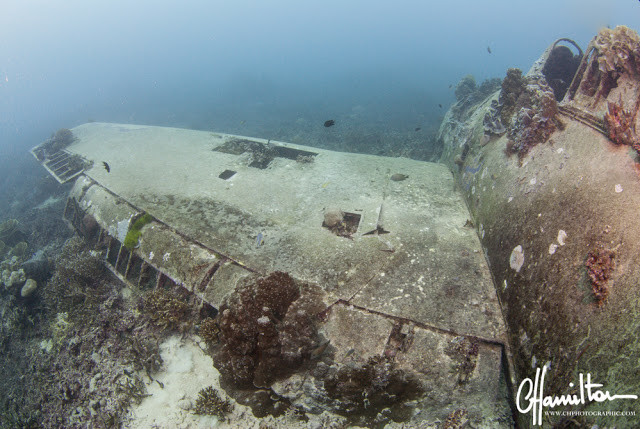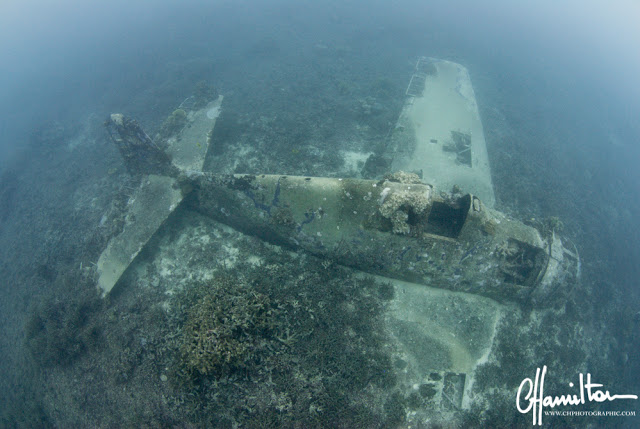In the last year, many photographs have surfaced of an “Airplane Graveyard” in the Kwajalein Atoll, Roi-Namur part of the Marshall Islands. Brandi Mueller who works for the Coastguard in America was teaching diving in the Marshall Islands when she came across the graveyard full of World War II planes about a year ago.
These planes did not plunge into the ocean after being shot down in a dogfight; they were simply dumped in the ocean from the aircraft carriers when the US Forces left the Marshall Islands at the end of World War II.
Towards the end of January 1944, the US Pacific Forces defeated the Japanese at Kwajalein Atoll as part of a larger battle to secure a corridor to the Japanese mainland. The US air force launched a bombardment against the Japanese supply convoy that was lying at anchor in the atoll. Most of the ships were sunk either at anchor or while trying to escape. There is little to remind the world of this battle except for the planes lying on the ocean floor.
Lying in their watery graves are some of the iconic planes of World War II. The B-25 Mitchell, manufactured by North American Aviation and named for a pioneer of U.S. military aviation, Major General William “Billy” Mitchell, was a bomber used extensively during the war. It served the military and civilian markets for at least 40 years after the war ended.

Also to be seen is The Grumman TBF Avenger. This torpedo bomber was used, not only, by the US Navy and Marine Corps but also several other armed forces around the world. The Avenger entered service in 1942 and saw its combat debut during the Battle of Midway. Though several were lost during this battle, the Avenger eventually became one of the most revered bombers of the war.
The Curtiss SB2C Helldiver was a dive bomber that flew off aircraft carriers. It was not a popular aircraft and neither pilots not carrier crew liked it very much but it did serve with distinction during the last two years of the war.
Another unpopular aircraft, found in the graveyard, is the Curtiss C-46 Commando. This transport plane was derived from a commercial airliner. It was given many nicknames such as “the plumber’s nightmare,” ‘the Curtiss Calamity,’ ‘the flying coffin’ and ‘the whale.’ The C-46 was the largest and heaviest twin-engine aircraft to see service during the war.
The Grumman F4F Wildcat came into war service with the British Air Force in Europe, but it was soon picked up by the Americans and was an effective carrier-based fighter during the early part of the war.
Douglas Aircraft produced the SBD Dauntless between 1940 and 1944. This dive bomber cum scout plane saw service both from land bases as well as aircraft carriers. It gained fame as the bomber that destroyed the Japanese fleet during the Battle of Midway in June 1942.
The Chance Vought F4U Corsair was an extremely popular piston-engined fighter, whose demand overwhelmed supply and forced Vought to allow the planes to be produced by Goodyear and Brewster.
This graveyard is an extremely popular dive site in the Marshall Islands but it is sad to see these graceful ladies of the sky, most of whom saw service throughout the Pacific theatre of war, which ultimately paved the way for the USAF access to bomb Hiroshima and bring about the end of Japan’s contribution to World War II.
Images via Pierre Kosmides more pictures here
